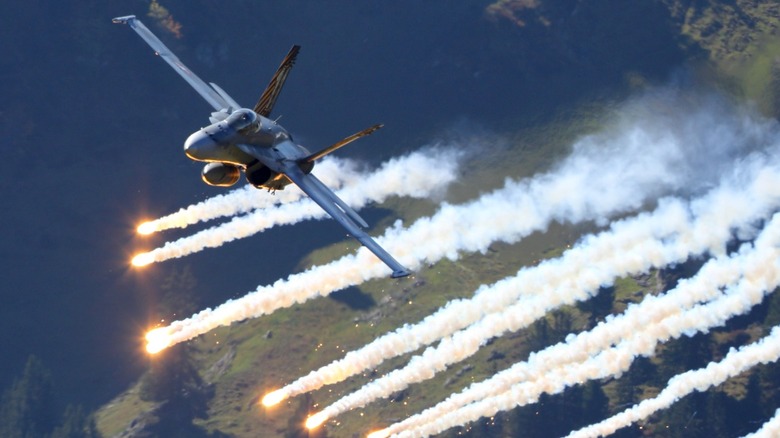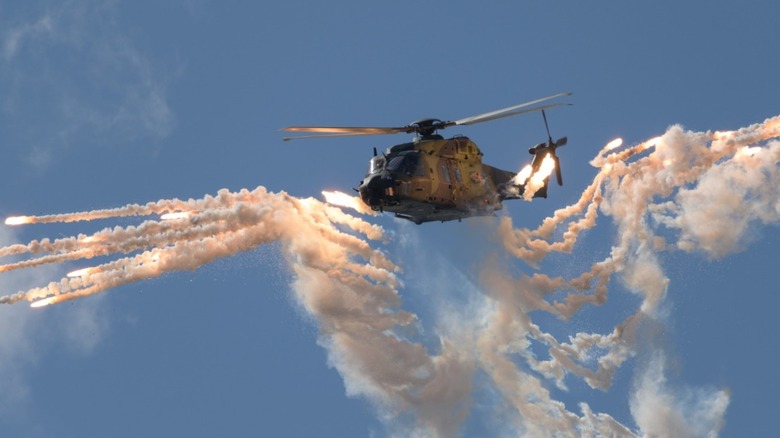What's The Difference Between Chaff And Flares? (And Why Do Military Aircraft Use Them?)
If you've watched "Top Gun," you might've noticed that the F/A-18's countermeasures use chaff/flare. While both chaff and flares are used by military aircraft to defend against incoming missiles, they are both different types of decoys used to confuse the enemy. At the moment, there are two primary types of missiles employed by military forces: radar-guided and heat-seeking.
Fighter pilots, especially from the NATO alliance, actually say what type of missile they're launching to warn their wingmen what type they just launched; warning their allies that there's an active munition in the air and to avoid friendly fire. However, the aircraft on the receiving end of the missile would not know what type of is heading their way. That's why the countermeasures installed on military planes must work for both types of missiles. This is where chaff and flares come in.
According to the National Center for Biotechnology Information, chaff is made up of aluminum-coated glass fibers measuring around 0.75 cm in length, about the size of your phone's charging port. Each cartridge releases between 500,000 to 100 million fibers: When scattered in the air, it creates a radar-reflective cloud that creates thousands of false targets for the radar-homing missile to lock on to instead of the target aircraft. On the other hand, flares are used to defend against heat-seeking missiles. These are often made using magnesium and burn at thousands of degrees, creating a target hotter than the engines of the aircraft.
Other ways aircraft avoid enemy fire
These two countermeasures are often considered part of an aircraft's last line of defense against missiles. That's why the latest jet fighters, like the F-22 Raptor, utilize stealth technology. After all, if their opponents cannot see them on radar, then they cannot be engaged. The F-35 Lightning II also use special technology to reduce its heat signature, making it harder for infrared seeking missiles to lock onto them.
Aside from these technologies, the military also uses electronic warfare (EW) to prevent enemies from seeing and locking into their aircraft. This technique, also called jamming, floods the airwaves with electromagnetic noise to disrupt radar systems used by opposing forces. Many aircraft in the U.S.'s inventory have EW equipment to help avoid getting detected, including the F-15, F-16, F-22, and F-35 fighter jets, as well as the UH-60 Blackhawk and AH-64 Apache helicopters.
The U.S. even has planes dedicated for this mission, with U.S. Navy aircraft carriers armed with EA-6B Prowler, a dedicated EW version of the A-6 Intruder ground attack aircraft. This jet had a long service life of over 50 years, before it was eventually replaced by the F/A-18-based EA-18G Growler in 2019. The U.S. Air Force also has several dedicated EW aircraft like the Gulfstream G550-based EA-37B Compass Call and C-130 Hercules-based EC-130H Compass Call. But despite all these advanced and dedicated countermeasures, many military planes still carry chaff and flare to protect them.

